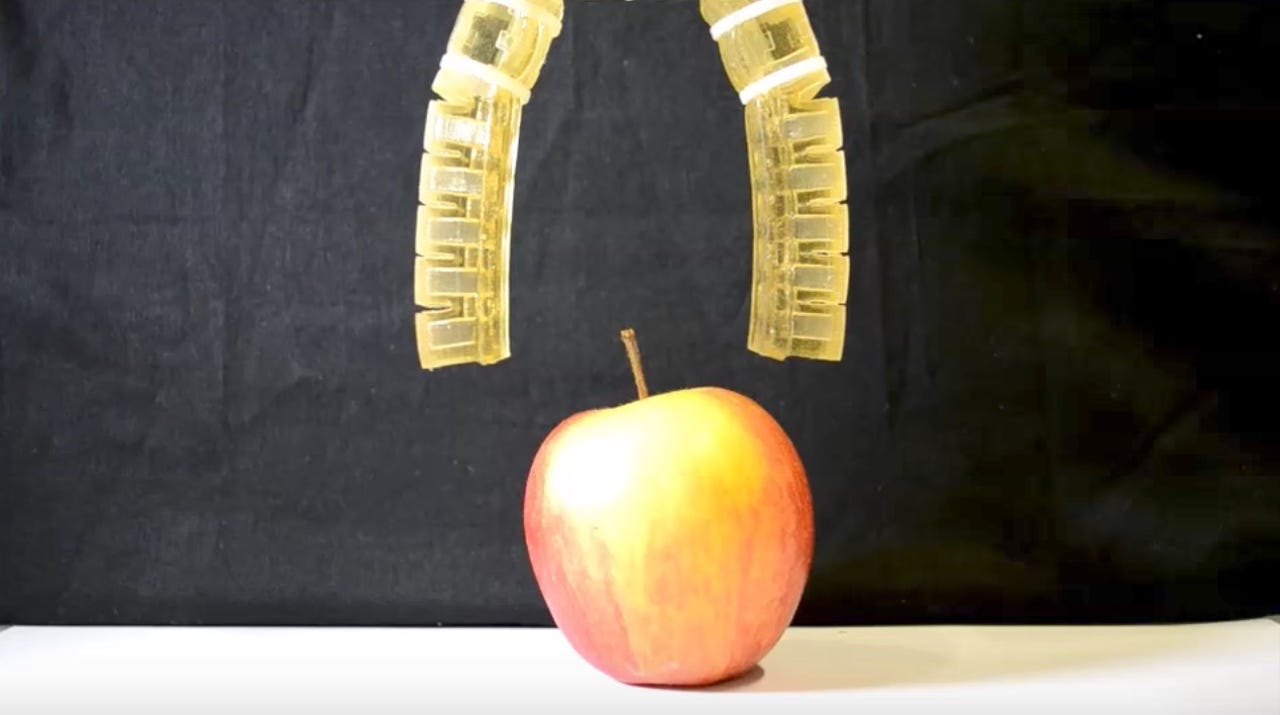You can eat these sustainable soft robots


Researchers have created edible, environmentally-friendly soft robots which could one day find purpose in the medical and research fields.
Soft robots in themselves are nothing new. Robots suitable for warehouses have been created from soft materials to make it safer for robots and humans to work alongside each other, robots with the composition of human tissue are being tested as an alternative to pacemakers, and the so-called "Meshworm" is able to crawl through tight spaces and may one day be used for endoscopies.
Featured
Now, researchers from the École polytechnique fédérale de Lausanne (EPFL) in Lausanne, Switzerland, are developing robots which are not only squishy but safe to eat.
As first reported by IEEE Spectrum, the research team, hailing from EPFL's Laboratory of Intelligent Systems, has created a prototype which uses gelatin to be safe to consume, biodegradable, and environmentally sustainable.
The research was disclosed at the IEEE/RSJ International Conference on Intelligent Robots and Systems (IROS 2017) conference in a paper called "Soft Pneumatic Gelatin Actuator for Edible Robotics."
In the paper, the scientists said the actuator is made of gelatin, glycerin, and water which is poured into a mold. The prototype has the form of human fingers which are able to inflate and stretch depending on external pressures.
The composition of the robot opens it up to a number of interesting uses. If merged with medical components, the robots could be utilized to release medication in a human or animal body at the correct point, and they could also be used in the study of animal behaviors.
If robots are treated as prey and eaten, for example, they could be used for tracking, internal studies of animal bodies or research into migration patterns.
The soft robots could also find a place as a help-mate for other kinds of robotics by providing a fuel source.
"When edible robots can be metabolized, they also function as energy storage providing an advantage in terms of increased payload with respect to non-edible robots that must be loaded with a food payload," the team says. "This would be effective in rescue scenarios where the metabolizable robots can reach survivors in isolated places like inside a crevice or up on a mountain."
In addition, another interesting component of these gelatin-based robots is the possibility of eating itself. If the material could provide energy for other robots, it could also provide energy for itself, too.
This "autophagy" self-eating function, may serve as a way for these robots to perform missions for humans in dangerous areas for long periods of time.
According to IEEE, the scientists have tried to eat them; at least, "bits and pieces" left over from manufacturing. They may not taste good without flavoring, but if they can help the healthcare and research sectors, the taste will likely be of little to no importance.
Previous and related coverage
Meet the soft robot that helps weak hearts to keep beating
A new robotics trial could give fresh hope to those with weak or failing hearts.
Meet Meshworm, the soft robot that'll be inching inside you
Its resilient, flexible design allows it to squeeze through tight spaces and could one day help make better endoscopes. With video.
Sex robot molested, destroyed at electronics show
The past year has seen a proliferation of sex robots, with plenty of accompanying controversy.